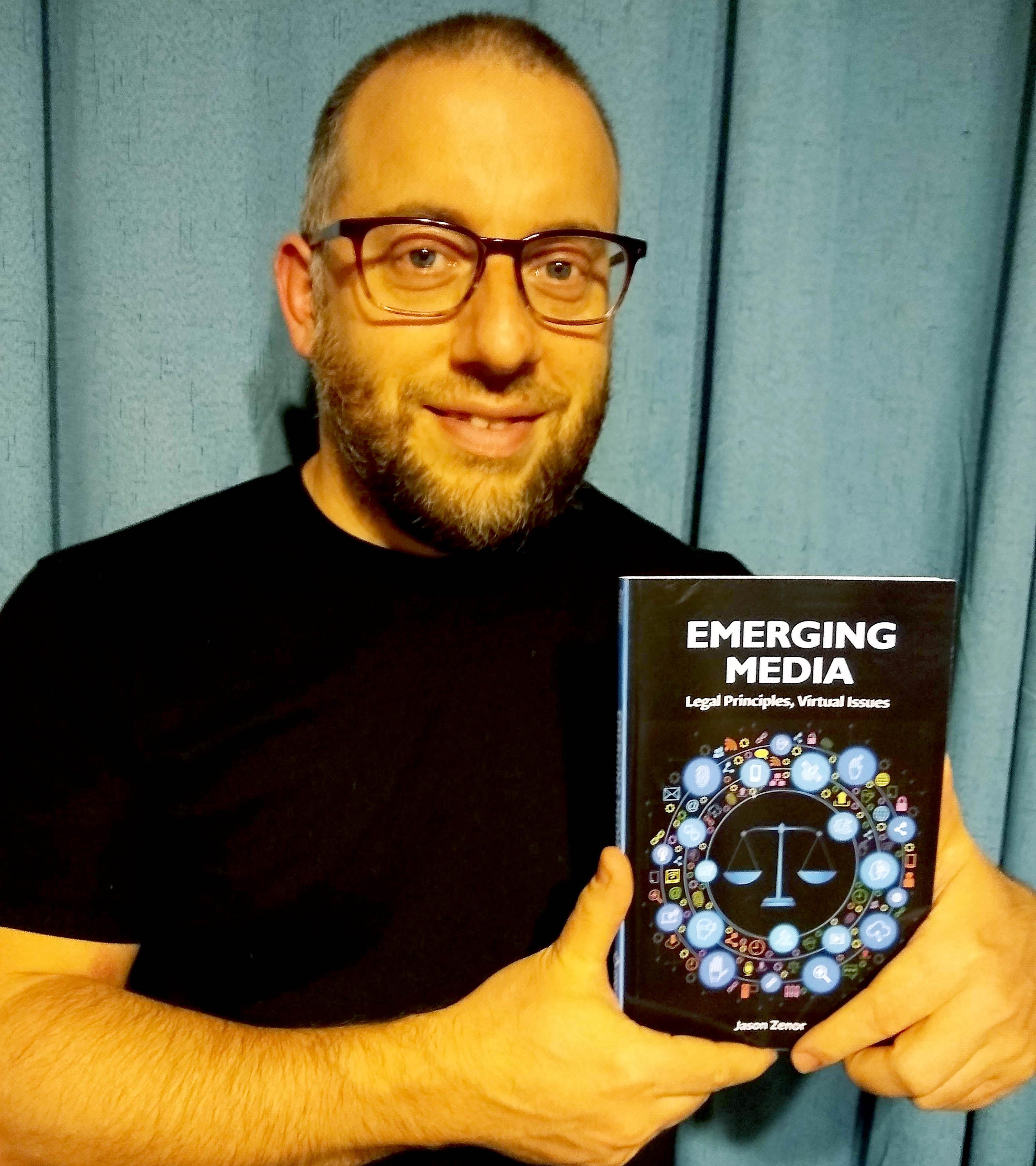Looking forward -- SUNY Oswego communication studies faculty member Jason Zenor’s new book, "Emerging Media: Legal Principles, Virtual Issues,” takes a forward-looking approach on the ever-evolving landscape of media law.
SUNY Oswego communication studies faculty member Jason Zenor’s new book takes a different approach to media law -- focusing forward instead of back.
The unique direction of “Emerging Media: Legal Principles, Virtual Issues” took shape in the media law classes he teaches in Oswego, Zenor said, as students were more interested in emerging technologies and trends than cases in dusty law books. The ramifications of legal issues in cutting-edge media developed into his research focus in the past decade.
“I published several papers on virtual reality and artificial intelligence and how communication technology could change,” Zenor said. “And then also in my class I found that most of the interesting conversations we had and debates we had were on these issues.”
The result is a book that its publisher, Cognella Publishing, said “introduces contemporary media and information studies students to the nexus between law and emerging media technology of connected devices, virtual reality and artificial intelligence.”
The book covers issues in the news like regulating tech companies, bots spreading fake news, apps that can track health information, facial recognition technology and hacking of data stored in the cloud.
Zenor noticed that this future-oriented focus is not something found in other textbooks.
“For students, there is no textbook like this on the market for media law,” Zenor explained. “Mostly, you’ll find legal books and textbooks that are looking at the past, because it's based on precedent and obviously it's easy to write about what's been established. So I took a shot here.”
Critical thinking
But the book, like his classes, also involves critical thinking, encouraging students to think about how communication technology can cause harm psychologically, socially and politically, and how laws and regulation may or may not mitigate these effects.
“The book is to make students think about technology and communications critically, but not just having a debate based on their opinions but by having it grounded in legal principles,” Zenor said.
“Whatever we have in the future for law and policy will be obviously derived from what's already established,” he noted, “but it's not a law textbook in the sense where there are lots of cases, and you have to memorize the letter of the law. It’s just more of a grounding that leads them to the discussion of critical analysis.”
With an issue like privacy, for example, some books might serve up a 50-page chapter on case law, but with the way technology continues to evolve so rapidly, providing more current examples and seeing where this topic might go could provide a more effective approach, Zenor said.
The textbook also acknowledges that students in broadcasting or journalism “didn’t get into it to become lawyers,” Zenor said.
“They are freelance journalists or have their own podcast, so they need to have a sense before they say something defamatory or try to violate somebody's privacy,” Zenor said of today’s students. “I just found that some of these textbooks for media law, you have 400 to 600 pages, and it was case after case, which is fine for law school or somebody who has an interest in that sort of thing. But I find for my students, just it's too much, and it's not what they take away from it.”
Other topics covered include censorship, false speech, civil liability, obscenity, identity rights, intellectual property, consumer protection and market regulation.
Zenor also was pleased that his publisher made the book affordable, and it has applicability beyond what a normal media law book might have.
“This is not only for broadcasting or journalism students, but also for students who might be in communications or information studies,” Zenor said. “But anybody who is going to be a consumer and a citizen to get something from it.”




